Westfront 1918 Blu-ray Movie
HomeWestfront 1918 Blu-ray Movie 
Vier von der Infanterie / Masters of Cinema / Blu-ray + DVDEureka Entertainment | 1930 | 97 min | Not rated | No Release Date
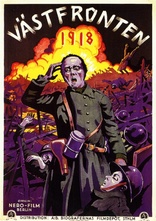
Price
Movie rating
6.9 | / 10 |
Blu-ray rating
| Users | 0.0 | |
| Reviewer | 3.5 | |
| Overall | 3.5 |
Overview
Westfront 1918 (1930)
Four infantrymen on the Western Front suffer the everyday hardships and insanity of trench warfare.
Starring: Fritz Kampers, Gustav Diessl, Hans-Joachim MŲbis, Claus Clausen, Jackie MonnierDirector: Georg Wilhelm Pabst
| Foreign | 100% |
| Drama | 80% |
| Romance | 20% |
| War | 11% |
Specifications
Video
Video codec: MPEG-4 AVC
Video resolution: 1080p
Aspect ratio: 1.19:1
Original aspect ratio: 1.2:1
Audio
German: LPCM Mono
Subtitles
English
Discs
Blu-ray Disc
Two-disc set (1 BD, 1 DVD)
DVD copy
Playback
Region B (A, C untested)
Review
Rating summary
| Movie | 4.0 | |
| Video | 4.0 | |
| Audio | 4.0 | |
| Extras | 1.5 | |
| Overall | 3.5 |
Westfront 1918 Blu-ray Movie Review
Reviewed by Dr. Svet Atanasov February 22, 2018G.W. Pabst's "Westfront 1918" a.k.a. "Westfront 1918: Vier von der Infanterie" arrives on Blu-ray courtesy of Eureka Entertainment. The only bonus feature on the disc is a new interview with Jan-Christopher Horak from UCLA Film & Television Archive. The release also arrives with an illustrated booklet featuring a new essay by Philip Kemp, alongside rare archival imagery. In German, with optional English subtitles for the main feature. Region-B "locked".
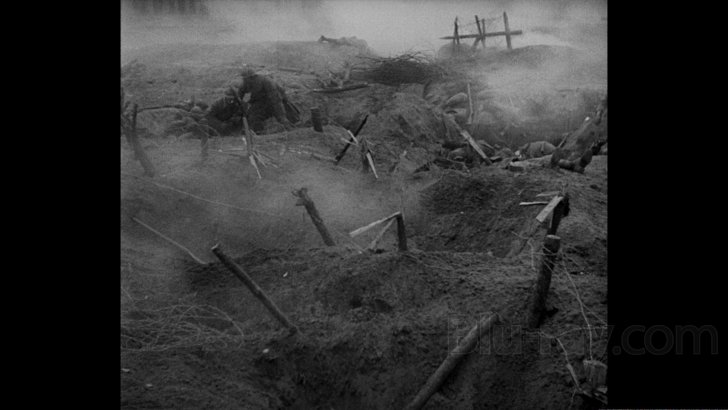
The front
G.W. Pabstís first sound film, Westfront 1918, carries the same message that Lewis Milestoneís legendary film All Quiet on the Western Front does: war is madness.
The bulk of Pabstís film has the raw appearance of a documentary feature. As World War I intensifies, the camera looks in all sorts of different directions to capture the chaos and blood-curdling carnage that people have been forced to endure. Sometimes the intensity of the random fights is so overwhelming that it almost looks as if the soldiers on both sides of the barb-wired trenches are lunatics who have somehow managed to get away from a mental institution.
The breaks between the fights are just as random and borderline surreal. Early into the film a group of German soldiers gather in an old cabaret to enjoy an improvised play by two aging comedians who have been tasked to temporarily make them forget the madness. Their play is poor, but with death lurking around the corner it feels brilliant and the spectators are thankful to be able to hear a few genuine laughs again. Then, just as abruptly, the soldiers are sent back to the front and the fighting resumes.
The creepiest segment is the one where the soldiers in the trenches begin choking after their enemies unleash a deadly gas. A few manage to put on their gas masks and reach the underground shelters, but there are many that are not that lucky. The ensuing silence is bone-chilling.
The one character that the camera eventually chooses to follow closely is Karl (Gustav Diessl), a tall and handsome German soldier who earns the right to go back home for a few days. The long journey is exhausting but he can barely wait to reunite with his wife and see his mother again. However, when he eventually reaches his home he discovers his wife (Hanna Hoessrich) in their bed with another man. He then refuses to forgive her even though she does her best to explain to him that she had to do it for food.
The most profound difference between Pabst and Milestoneís films is in the manner in which they choose to incorporate melancholy in their narratives. In Pabstís film its role is practically meaningless as there is only one very small segment where its presence is truly felt, which comes right after the disillusioned Karl announces to his heartbroken wife that it is time for him to head back to the front. Right here there is a whiff of melancholy that temporarily erases the heavy presence of the madness that is destroying just about everything that the camera looks at. His country might be going to Hell, but Karl no longer cares because he has already lost his wife. In Milestoneís film the melancholy is an integral element of the atmosphere that defines it.
*Westfront 1918 is based on Ernst Johannsenís popular novel. After Hitler and his National Socialists came to power, the novel and Pabstís film were quickly banned.
Westfront 1918 Blu-ray Movie, Video Quality 
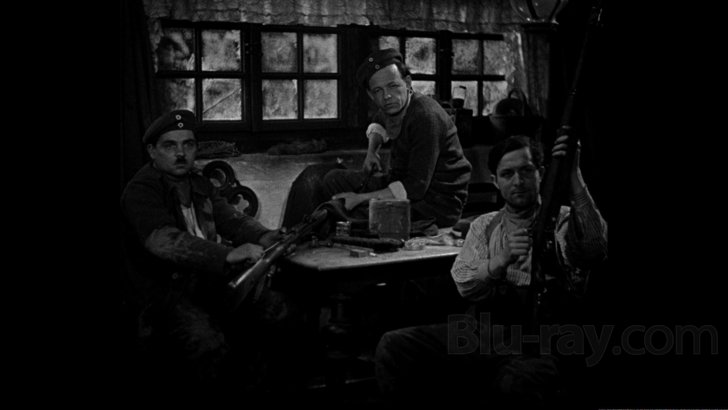
Presented in an aspect ratio of 1.19:1, encoded with MPEG-4 AVC and granted a 1080p transfer, G.W. Pabst's Westfront 1918 arrives on Blu-ray courtesy of Criterion.
The release is sourced from the same 2K restoration that Deutsche Kinemathek completed in Germany and Criterion used when they prepared the recent U.S. release. However, there are some pretty drastic discrepancies between the Region-B and Region-A releases. Basically, here black levels are elevated so much that there is actually plenty of detail and a good range of nuances that are lost. The indoor and especially the nighttime footage looks quite heavy, with very strong blacks that essentially create crushing effects (see screencaptures #8 and 12). The elevation was likely introduced during the encoding because I am not seeing any traces of additional remastering work. This being said, the lighter/daylight footage tends to look quite good pleasing good, and in some areas the overall balance actually looks quite good (see screencapture #4). So the tonal shifts are unfortunate because the basics of the restoration remain solid. My score is 3.75/5.00. (Note: This is a Region-B "locked" Blu-ray release. Therefore, you must have a native Region-B or Region-Free player in order to access its content).
Westfront 1918 Blu-ray Movie, Audio Quality 
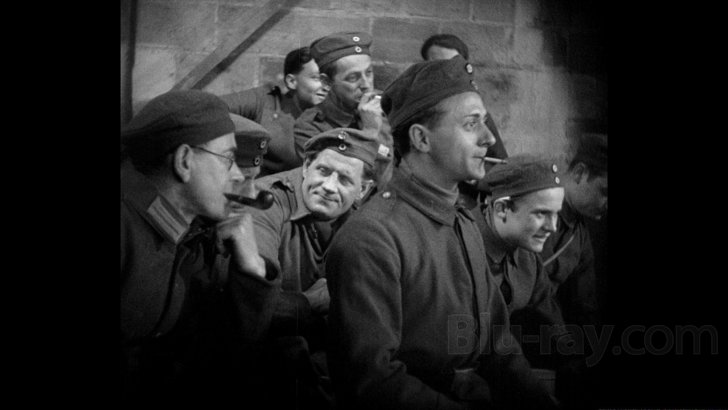
There is only one standard audio track on this Blu-ray release: German LPCM 1.0. (with a few short exchanges in French). Optional English subtitles are provided for the main feature.
I mentioned in our review of the U.S. release that there is some 'thinning' and clipping in the high-frequencies, and now having seen this release I am pretty confident stating that the audio during the battles was basically recorded with the obvious limitations. It is of course possible that time has also exacerbated some of the anomalies, but the basic characteristics have native qualities.
Westfront 1918 Blu-ray Movie, Special Features and Extras 

- Introduction - in this video interview, Jan-Christopher Horak, director of UCLA Film & Television Archive, discusses the evolution of G.W. Pabst's career and the important role that Westfront 1918 occupies in his body of work. The interview was conducted in 2016 for Fiction Factory. In English, not subtitled. (18 min, 1080p).
- Booklet - an illustrated booklet featuring a new essay by Philip Kemp, alongside rare archival imagery.
Westfront 1918 Blu-ray Movie, Overall Score and Recommendation 
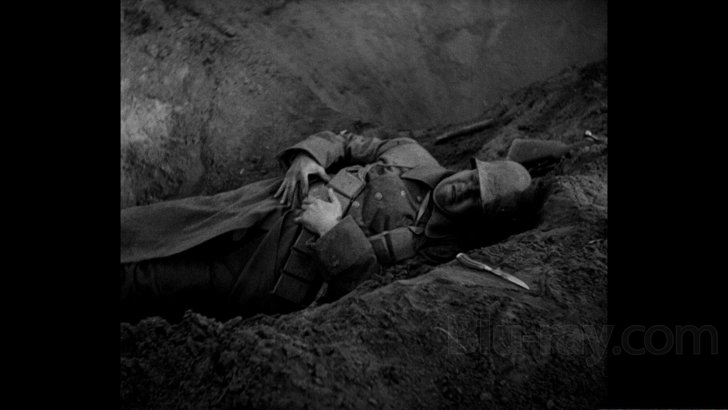
This Region-B release of G.W. Pabst's Westfront 1918 is sourced from the 2K restoration that Deutsche Kinemathek completed in Germany and Criterion used when they prepared the recent U.S. release of the film. However, I find the technical presentation somewhat frustrating because on this release the film could look very dark, with the nighttime footage actually producing some obvious crushing. If you can play Region-A discs, my advice to you is to consider picking up Criterion's release, which also has a better selection of supplemental features.
Similar titles
Similar titles you might also like
(Still not reliable for this title)

The Cranes Are Flying
Летят журавли / Letyat zhuravli
1957

Red Angel
赤い天使 / Akai tenshi
1966

La Grande Illusion
Grand Illusion
1937

Ivan's Childhood
Ива́ново де́тство / Ivanovo detstvo
1962

Wooden Crosses
Les croix de bois / Masters of Cinema
1932

The Front Line
고지전 / Go-ji-jeon
2011

Lebanon: The Soldier's Journey
2009

A Special Day
Una giornata particolare
1977

Hiroshima mon amour
1959

J'Accuse
I Accuse
1938

Cemetery of Splendour
รักที่ขอนแก่น / Rak ti Khon Kaen
2015

The Human Condition I: No Greater Love
人間の條件 / Ningen no jōken
1959

City of Life and Death
南京!南京! / Nanjing! Nanjing!
2009

Frantz
2016

Hiroshima
ひろしま / Arrow Academy
1953

Stalingrad
20th Anniversary Edition
1993

Coming Home
Masters of Cinema
1978

The Life and Death of Colonel Blimp
Digitally Restored
1943

The Burmese Harp
ビルマの竪琴 / Biruma no tategoto / Masters of Cinema
1956

Diamonds of the Night
Démanty noci
1964